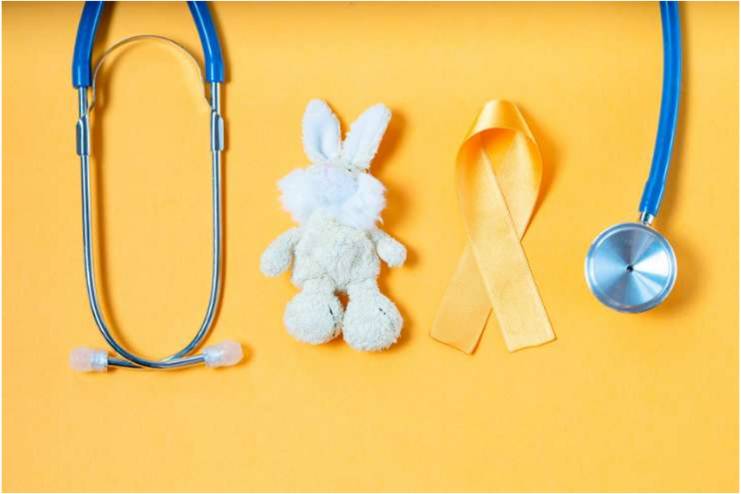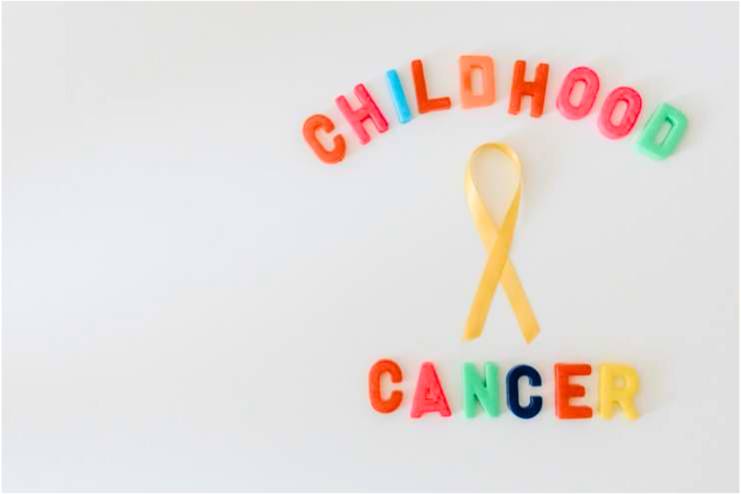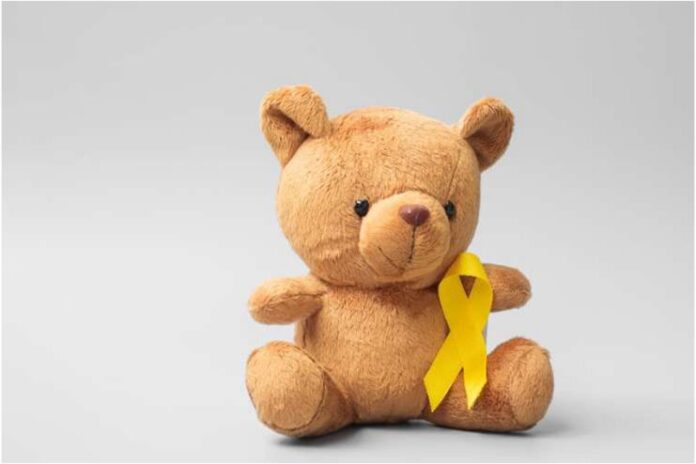Affiliate Disclaimer
Some links in this article are affiliate links. We may earn a small commission if you make a purchase through these links, at no extra cost to you. We only recommend products we find useful to our readersSeptember is Childhood Cancer Awareness Month. Advocacy groups, medical facilities, patients, and families raise awareness of childhood cancers every September. This vital month seeks to draw attention to the difficulties faced by young people with cancer and focuses on advanced research for improved diagnosis, care, and results.
In 1990, President George H.W. Bush issued a presidential proclamation establishing National Childhood Cancer Awareness Month. September 26 is designated as a day to raise awareness about pediatric cancers. By raising public awareness, we can support enhanced support for impacted families, promote donations to cancer research, and push for improvements in pediatric oncology.
Childhood Cancer Awareness Month is significant because it brings communities together, raises money, and ultimately enhances the lives of kids with cancer.
History and Significance

This unique month has developed into a powerful platform for promoting awareness and funding research throughout the years. The U.S. and other high-income countries have survival rates for pediatric cancers above 80%. The cancers primarily affect adults and differ significantly from those mainly affecting youngsters.
An estimated 275,000 children and adolescents (ages 0-19) receive a cancer diagnosis each year worldwide. The three most prevalent forms are lymphoma, brain tumor, and leukemia.
Important turning points in the study of childhood cancer include improved treatment outcomes and higher survival rates. For instance, results have significantly improved because of advancements in immunotherapy and targeted medicines. National and international organizations are also making efforts to support families and fund research.
These accomplishments witness the commitment of scientists, physicians, and change-makers at all levels. We can only advance the development and aspire for a time when every child with cancer has a better tomorrow by acknowledging the past and applauding these accomplishments.
Statistics and Facts

With 1 in 285 children receiving a diagnosis each year, childhood cancer is still a significant problem. Thankfully, improvements in therapy have resulted in much higher survival rates; at least five years after diagnosis, 85% of children survive.
The most common type of cancer in children is brain tumors, but leukemia, which affects the bone marrow and blood, is more common. In younger children, neuroblastoma—a cancer of the nerve cells—is also frequent. Each of these illnesses significantly impacts young people and their families.
Young children can also acquire tumors like retinoblastoma or kidney tumors, which are particular to their age. Because the causes of many cancer forms are still poorly understood, prevention is challenging.
The American Childhood Cancer Organization invites everyone to remember and recognize children afflicted by childhood cancer in September. The organization’s mission is to raise awareness and donations for those impacted by this disease. It is easier to spread awareness and motivate efforts to develop better treatments and assistance for affected families when one is aware of these numbers and the different types of childhood cancers.
How to Get Involved

A potent method to change things is to support Childhood Cancer Awareness Month. Here’s how you may participate:
Donations: Contribute to pediatric cancer research and charity groups. Solving Kids’ Cancer’s mission is to locate, support, and promote innovative therapeutic approaches for the most lethal childhood cancers. Your contribution will assist in financing the creation of novel, efficient therapies.
Explore links to make a difference in the fight against childhood cancer by donating today.
https://www.alexslemonade.org/
Volunteering: Give your time to activities or organizations in your community. You can donate your time in various ways during Childhood Cancer Awareness Month. As a volunteer, you can go to local hospitals or even offer a patient needing a ride. Look into local volunteer opportunities to learn how you may contribute to your community.
Raising Awareness: Use your social media accounts to disseminate facts and personal accounts regarding children’s cancer. Little deeds like posting on social media or participating in awareness campaigns might help spread the word.
Watch for activities throughout the month, including local fundraisers, virtual campaigns, and charity races. No matter how big or small, every effort helps those impacted by childhood cancer and advances the battle against it.
Stories and Testimonials
Families impacted by children’s cancer share their stories, which provide valuable perspective and motivation. These narratives offer a window into the daily challenges and victories that young patients and their loved ones encounter. Families frequently talk about their experiences, emphasizing their kids’ bravery and resiliency as well as the help they’ve received from friends, neighbors, and medical professionals.
Account of Devan’s Acute Promyelocytic Leukemia diagnosis:
In the U.S., there are more than 500,000 survivors of pediatric cancer, including Devan. At the age of twenty months, Devan received a diagnosis of Acute Promyelocytic Leukemia. He had to undergo an intensive course of treatment that included chemotherapy and an unplanned brain surgery.
There was no donor match when he relapsed at age four and required a bone marrow transplant immediately, as is much too often with youngsters of mixed races. Instead, he had an experimental stem cell transplant and high-dose chemotherapy.
Samuel had high-risk medulloblastoma:
Samuel’s brain tumor diagnosis disrupted the lives of his family and his brothers. The surgeon removed the tumor in surgery, but the family was devastated to learn that the growth was cancer a few days after the complicated procedure. They later found out that the cancer had spread and that there was another brain area with the disease, putting his situation at a high risk of relapse following therapy rather than the typical risk.
It required more rigorous therapy and increased long-term adverse effects. The SIOP-HR-MB study treated Samuel, seeking the best high-risk medication with minimal adverse effects.
Conclusion
During Childhood Cancer Awareness Month, it’s critical to raise awareness of the difficulties experienced by young cancer patients and the value of continuing research. By increasing awareness, we can support families, advance medical advancements, and offer hope to young cancer patients. Your contribution can have a big influence in the form of funds, time, or awareness-raising. Come and help this important cause by joining the battle against childhood cancer. Together, we can create a brighter future for all children affected by cancer.
References
- https://www.whitehouse.gov/briefing-room/presidential-actions/2024/08/30/a-proclamation-on-national-childhood-cancer-awareness-month-2024/
- https://www.acco.org/childhood-cancer-awareness-month/
- https://www.iarc.who.int/featured-news/childhood-cancer-awareness-month-2024/
- https://www.aacr.org/patients-caregivers/awareness-months/childhood-cancer-awareness-month/
- https://www.cancer.gov/pediatric-adult-rare-tumor/news/upcoming-events/childhoodcancerawarenessmonth
- https://www.paho.org/en/campaigns/childhood-cancer-awareness-month-september-2022
- https://www.childrenscancercause.org/september
- https://www.stjude.org/get-involved/other-ways/childhood-cancer-awareness-month.html#facts
- https://www.cclg.org.uk/about-childhood-cancer/childhood-cancer-stories/samuels-story-2
- https://www.danafarberbostonchildrens.org/patients-and-families/patient-and-family-support-services/childhood-cancer-awareness
- https://childrenscancer.org/childhood-cancer-awareness-month/
- https://curechildhoodcancer.org/about-childhood-cancer/
- https://cancerfundforchildren.com/family-stories/
- https://siop-online.org/childhood-cancer-awareness-month/
- https://thekccf.org/about-us/our-story/
In this Article


















